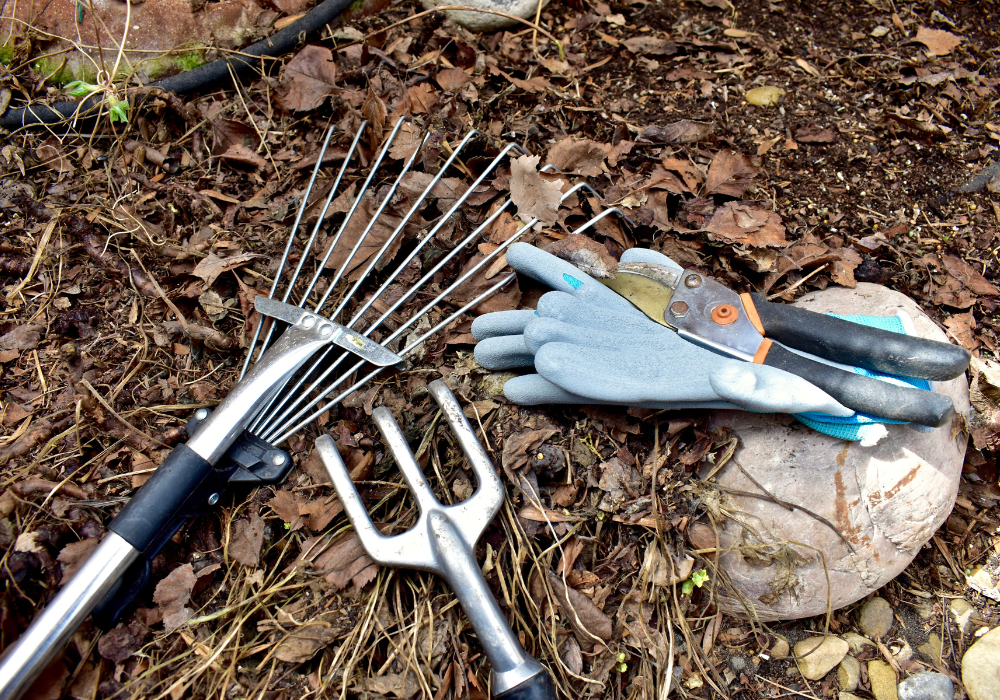In this extensive spring landscaping clean-up checklist, we’ll guide you through the critical steps to revitalize your garden. From tidying up to the exciting prospect of new growth, each step is designed to help you create an outdoor landscape that will flourish all season long.
Step 1: Assess and Plan
Before you start your spring landscaping project, it’s crucial to take a step back and assess the current state of your yard. Walk around your property, take note of any damage caused by winter weather, and consider the changes or additions you’d like to implement this season. Developing a clear plan will save you time and ensure that you’re working towards a cohesive vision for your garden.
Landscape Assessment
Inspect your garden for signs of damage such as broken tree branches, heaved plants, or patches of dead grass. These issues need to be addressed promptly to prevent further problems.
Revisit Your Garden Goals
Review any landscaping ideas or goals you set last year. Do they still align with your current vision and lifestyle? Make adjustments as necessary.
Draw Up a To-Do List
List the tasks required to achieve your vision, such as planting new flowers, building hardscape features, or repairing fences.
By setting clear objectives and outlining the work that needs to be done, you’re establishing a foundation for a successful spring clean-up.
Step 2: Tidy Up

The clutter of winter can linger in our garden and suppress the fresh new life of spring. It’s time to declutter and prepare the canvas for the spectacle of the season to come.
Remove Debris
Rake up fallen leaves, clear away dead plants, and collect any litter that may have accumulated. Not only does debris stifle growth, but it can also harbor pests and diseases that can spread to healthy plants.
Prune and Trim
Pruning is essential for the health of your trees and plants. Remove any dead or diseased branches to encourage new growth. Trim hedges and shrubs to maintain shape and promote vigorous blooming.
Dividing Perennials
If you have perennials that are overcrowded or need rejuvenation, now is the time to divide them. This will alleviate competition for resources and give your plants a fresh start.
An organized and tidy landscape paves the way for a healthy, visually appealing garden.
Step 3: Soil Health

Healthy soil is the backbone of a thriving garden. This spring, don’t neglect the underappreciated yet vital task of soil maintenance.
Check Soil pH
Test your soil to ensure it’s at the optimal pH level for the plants you want to grow. If adjustments are necessary, amend your soil with organic materials or the appropriate pH balancers.
Amend Soil
Add organic matter such as compost to your soil. This will enrich the soil with essential nutrients, improve its structure, and aid in water retention—key for the establishment of new plantings.
Mulching
A new layer of mulch helps to suppress weeds, retain moisture, and maintain soil temperature as the weather fluctuates. Ensure you leave a gap between the mulch and the base of plants to prevent rot.
Healthy soil leads to healthy plants. By fortifying your soil, you’re setting the stage for robust growth.
Step 4: Plot the Plants
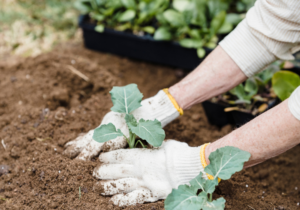
Spring is synonymous with new growth, and planting is a highlight of this time of year. When plotting your new plants, consider their needs in terms of light, space, and soil requirements.
Choose the Right Plants
Select plants that are suited to the conditions of your garden. Consider local climate, soil type, and available sunlight.
Design with Intent
Be strategic in your planting design. Group plants with similar needs together to create a more efficient garden that’s easier to maintain.
Time it Right
Be mindful of planting times. Some plants prefer to be put in the ground early in spring, while others thrive on later planting dates.
The proper placement and timing of your plants will ensure they get off to a strong start.
Step 5: Fertilize Strategically
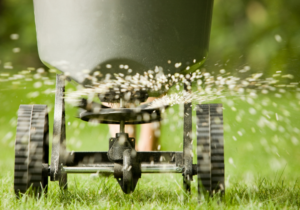
Spring is a key time for fertilization, as it supports the vigorous growth that occurs this season. Understanding your plant’s needs is critical for effective fertilizing.
Use the Right Fertilizer
Different plants require different nutrients. Select a fertilizer that’s formulated for the type of plants you’ll be feeding.
Apply Fertilizer Sparingly
Over-fertilizing can be detrimental to plants and the environment. Follow application instructions and err on the side of caution.
Consider Organic Alternatives
Organic fertilizers are a sustainable option that can enhance soil structure and microbial activity.
By fertilizing smartly, you’re enriching your garden without the risk of harm.
Step 6: Water Wisely
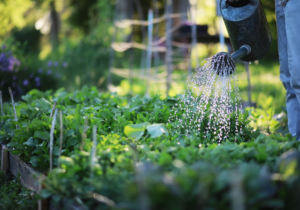
The arrival of spring doesn’t necessarily mean heavy rainfalls. It’s important to pay attention to the water needs of your garden, especially as new plants establish themselves.
Check Soil Moisture
Before watering, check the soil moisture to determine if your garden requires it. Over-watering can be as damaging as under-watering.
Water Deeply
For most plants, deep and infrequent watering is best as it encourages root growth.
Invest in Smart Systems
Consider installing a drip irrigation system to ensure your garden gets the right amount of water without the wastage of traditional watering methods.
Conservation and efficiency are the keys to successful watering practices.
Step 7: Integrated Pest Management

Bugs and unwanted creatures are an inevitable part of the ecosystem. Integrated pest management offers a balanced approach to pest control.
Utilize Beneficial Insects
Attract or release beneficial insects that will prey on pests, naturally keeping your garden in check.
Use Barriers
Physical barriers can help protect your plants from pests. These can be as simple as mesh or as complex as row covers.
Selective Pesticides
If necessary, use pesticides sparingly and in a targeted manner to minimize the impact on beneficial insects and wildlife.
Promoting a healthy, biodiverse garden is the most effective long-term pest control strategy.
Step 8: Compost, Compost, Compost
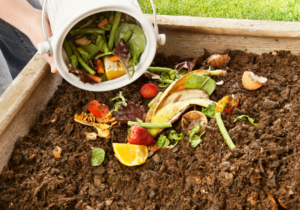
Composting is both an eco-friendly and cost-effective way to manage organic waste and enrich your garden.
Start a Compost Pile
If you don’t have one already, start a compost pile with kitchen scraps, yard waste, and other organic materials.
Turn the Compost
Regularly turning or aerating your compost speeds up the decomposition process and prevents odors.
Apply Compost to Gardens
Once your compost is mature, apply it to your garden to improve soil health and fertility.
Composting is a simple practice that yields significant benefits for your garden and the environment.
Step 9: Care for Your Lawn
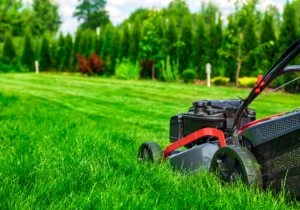
A well-maintained lawn is a point of pride for many homeowners. Spring is the perfect time to ensure your lawn is in top condition.
Aerate the Soil
To alleviate compaction and promote healthy root growth, aerate your lawn at least once a year.
Seed Bare Spots
Fill in bare spots on your lawn with grass seed. Spring’s wetter weather and warmer temperatures are conducive to grass growth.
Set Your Mower to the Right Height
Adjusting your mower to the correct height—usually around 2-3 inches—promotes healthy grass growth and suppresses weeds.
A little TLC for your lawn goes a long way in creating a lush, green space for outdoor enjoyment.
Step 10: Hardscape Maintenance
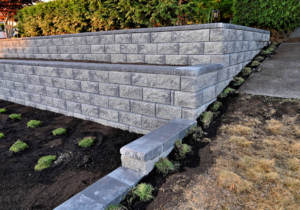
Don’t forget about your hardscape elements; they need attention too.
Check Hardscape for Damage
Inspect paths, patios, and other hardscape features for damage. Repair any cracks or uneven surfaces to prevent injuries and maintain aesthetics.
Clean Decks and Patios
Winter can leave decks and patios looking worse for wear. Give them a thorough cleaning to make them ready for spring and summer enjoyment.
Inspect Outdoor Equipment
Give your outdoor equipment, such as grills or furniture, a once-over before the heavy-use season kicks in.
A well-kept hardscape complements the beauty of your garden and ensures outdoor spaces are safe and inviting.

